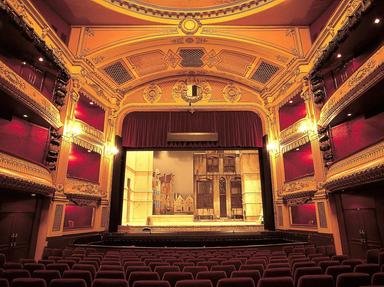Quiz Answer Key and Fun Facts
1. Kabuki has its origins in 17th century feudal Japan. What shogunate ruled Japan when kabuki debuted?
2. Though considered a traditional form of Japanese art, modern Kabuki has one major distinguishing feature which is in direct contrast the first Kabuki performances. What is this feature?
3. Due to its suggestive nature, Kabuki with all female casts was immediately popular. What was often an additional feature offered to audiences in early Kabuki?
4. In 1629, onna-kabuki, which was performed by all female casts, was banned due to eroticism and prostitution. For a short period of time, wakusha-kabuki took its place. What was the difference between onna-kabuki and wakusha-kabuki?
5. With the banning of onna-Kabuki in 1629, wakashu-kabuki, which was performed by younger boys, became available but was quickly banned. Why was wakashu-kabuki banned?
6. Another popular feature of kabuki is called keren. What are keren?
7. One of the most popular keren in kabuki is the stagecraft trick known as hayagawari. What is this trick?
8. Another very popular keren is known as yatai kuzushi. As a rule, yatai kuzushi can generally only be used once during a kabuki performance. Why is this?
9. A kabuki set has a feature known as a hanamichi, which means "flower path." This is a projection of the stage into the audience. What is the purpose of a hanamichi?
10. Finally, if you want to see a kabuki play, where would you have to be in order to attend one?
Source: Author
foxbarking
This quiz was reviewed by FunTrivia editor
looney_tunes before going online.
Any errors found in FunTrivia content are routinely corrected through our feedback system.
